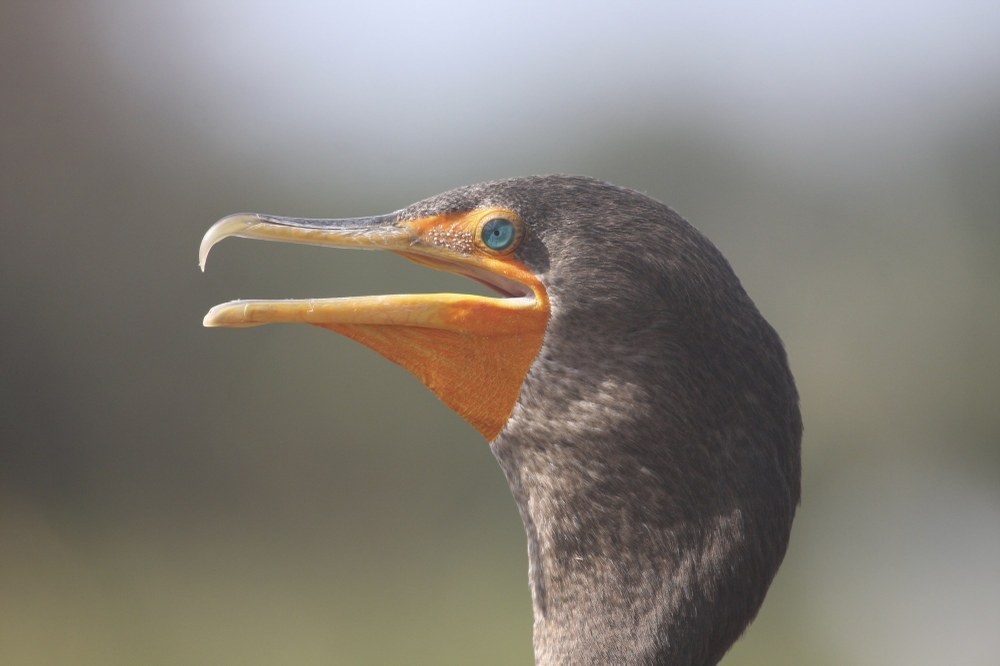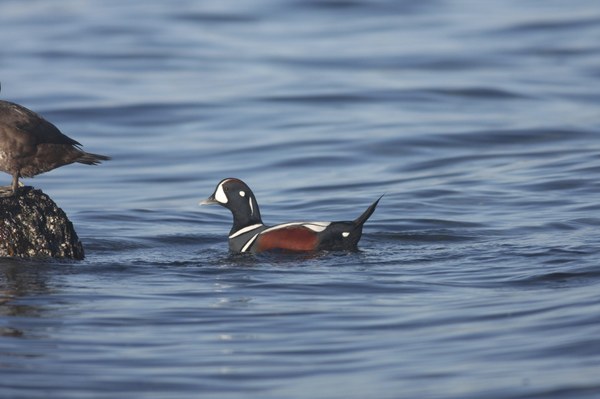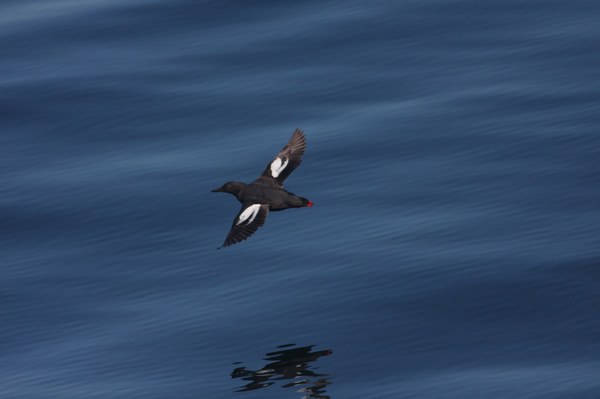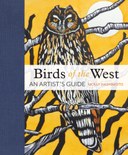
Sometimes a seabird is simply a bird that lives on the sea; other times it can lead you to a deeper connection with the world around you. For Joe Sweeney, that magic happens every time he visits the shore.
What could lure a beginner to look for seabirds? “The thrill that anything could show up,” Joe says. “Any bird could fly by, but also whales. I‘ve seen humpback whales, orcas, porpoises, sea lions, and river otters.”
A lifelong health and fitness devotee, he has hiked Mt. Whitney and Mt. Kilimanjaro, bicycled across the United States twice, and gained a bird’s-eye view of the earth more than 700 times hang gliding. But his latest passion is seabirds.
The leap isn’t that unexpected. It all began with hang gliding. It was only natural that his thoughts would turn to birds. Gliding over the California landscape, he was inspired to learn more about birds. Later, when he was living in Mexico and working as a fitness instructor at a health resort, he began leading bird walks. For 10 years, he introduced resort visitors to the wonders of the local birds. But he still wasn’t very familiar with seabirds because he didn’t live near water.
 Harlequin Duck. Photo by Joe Sweeney.
Harlequin Duck. Photo by Joe Sweeney.
Not All Seabirds are Seagulls
Joe moved to Seattle five years ago, and that’s when his birding world suddenly expanded. He was living in a place surrounded by water; defined by water. He was drawn to the shore, where he began to spend lots of time studying the seabirds. He’s a graduate of Seattle Audubon’s Master Birder program, and now leads bird walks and teaches seabird identification. Joe prefers to be descirbed as a “graduate” of the Master Birder course instead of “master birder.”
Though he still consults as a personal trainer, retirement has given him more time to indulge in his new passion. Living so close to so much water, he’s like a kid in a candy shop. He’s hooked on our marine life and spends much time along the shore. His usual haunts include Richmond Beach and Edmonds Pier.
After all, he says, “You don’t have to drive to the ocean to see seabirds.” Puget Sound abounds with seabirds. With dozens of species of seabirds living in our region, you don’t need a boat or even a spotting scope to appreciate them. Around Puget Sound, you can see a wide variety of seabirds year-round from the shore. Joe says a pair of binoculars and any decent field guide are all that’s necessary to appreciate these underappreciated birds.
If you think all seabirds are all gulls, or dark, uninteresting blobs, consider the harlequin duck. He wears a jaunty suit of blue-gray and rust, with striking white patches and a mask befitting any member of its namesake troupe. Harlequins are winter visitors to Puget Sound, helping to lure birders out on otherwise dreary, cold gray days.
No doubt you’ve spotted great blue herons. They’re actually a shorebird and not a seabird, but they are common year round and easy to see standing on their long legs near the shore. Ducks, geese, cormorants, and grebes are some of the others that are easily seen.
Some you see, then you don’t!
Species like mergansers and grebes frequently dive below the surface to find food, popping up a short distance away.
Cormorants are familiar big black seabirds that congregate around the harbors and ferry terminals. If you look closely, you’ll see the differences between the double-crested and pelagic.
Everyone knows gulls, but which one? Which plumage? Gulls are some of the most challenging birds to identify. Their appearances vary by age and season. There are breeding plumages and winter plumages, first summer, first winter, second winter, and adult plumages. It’s enough to discourage anyone! Yet, Joe assures us it is possible to unravel the mysteries of gulls.
Don’t forget the terns. You may have seen terns but mistook them for gulls. Terns have a sleeker look, with longer and more pointed bills. The Caspian tern, which summers around Puget Sound, is a striking bird, with a black cap and bright red-orange bill.
There are other rewarding seabirds to identify. One of Joe’s favorite families of seabirds are alcids, a large group that includes murres, murrelets, puffins, guillemots, and auklets, many of which can be spotted around Puget Sound at different times of the year.
Despite their name, seabirds aren’t necessarily confined to water all of the time. Imagine a seabird whose existence is deeply intertwined with old-growth forests. That’s the marbled murrelet. This is a small but chunky, robin-sized bird that nests in big trees in the Pacific Northwest. Maria Mudd Ruth, author of Rare Bird: Pursuing the Mystery of the Marbled Murrelet, published by Mountaineers Books, said, “Most Mountaineers have been in marbled murrelet habitat without knowing it. Maybe they have heard the keer calls, which can sound like a cross between a hawk and a gull. There is one marbled murrelet sound that no one has yet recorded. It sounds like a jet airplane.” (See related article in The Mountaineer, Nov/Dec 2013, p. 12)
During nesting season, marbled murrelets fly as many as 30-45 miles from the sea to their nests, every day. In June, says Joe, they are often fairly easy to see in Puget Sound. The fact that their numbers are dwindling makes it all the more exciting to see one. Marbled murrelets are federally listed as threatened, and the state Department of Fish and Wildlife has recommended they be state listed as endangered. There are an estimated 5,000 marbled murrelets left in Washington. Logging, declines in prey fish, oil spills, and deaths from fishing nets, in addition to a naturally low reproductive rate, are cited as factors in their decline. “The broad, horizontal limbs of older trees are generally needed to support the single murrelet egg which is laid on the limb,” the agency website states.
 Pigeon Guillemot. Photo by Joe Sweeney.
Pigeon Guillemot. Photo by Joe Sweeney.
Another species that can be seen here is the common loon. Loons are widely distributed across the United States and are often associated with northern wilderness areas. They have a haunting call. You are more likely to see them in Puget Sound and on lakes during migration and winter here. But their population numbers are unknown and state biologists consider them a “state sensitive species.” As common as seabirds might seem, it’s sobering to realize all the hazards they face daily: being eaten by something bigger, being caught in a fishing net, being hit by a ship, starving, and choking or strangling on plastic garbage. They are survivors; they carry eons of nature’s rhythms in their DNA.
“The best way to get people to take care of the environment is to turn them on to nature,” Joe notes. “That’s why I lead these bird walks.” Puget Sound abounds with life, especially birds. Wander down to the shore sometime and drink in all that the water offers. Do you like a challenge? Try identifying seabirds during and after the breeding season. Plumages can change radically during the breeding season, and males and females differ at all times in some species.
Rachel Carson wrote, “To stand at the edge of the sea, to sense the ebb and flow of the tides …to watch the flight of shore birds that have swept up and down the surf lines of the continents for untold thousands of years… is to have knowledge of things that are as nearly eternal as any earthly life can be.”
This article originally appeared in our Fall 2017 issue of Mountaineer Magazine. To view the original article in magazine form and read more stories from our publication, click here.
 Joan Miller
Joan Miller
